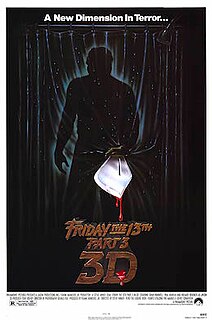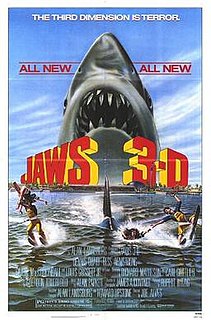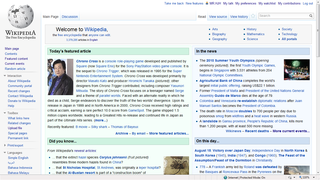
Widescreen images are images that are displayed within a set of aspect ratios used in film, television and computer screens. In film, a widescreen film is any film image with a width-to-height aspect ratio greater than the standard 1.37:1 Academy aspect ratio provided by 35mm film.

VistaVision is a higher resolution, widescreen variant of the 35 mm motion picture film format which was created by engineers at Paramount Pictures in 1954.

70 mm film is a wide high-resolution film gauge for motion picture photography, with negative area nearly 3.5 times larger than the standard 35 mm motion picture film format. As used in cameras, the film is 65 mm (2.6 in) wide. For projection, the original 65 mm film is printed on 70 mm (2.8 in) film. The additional 5 mm are for four magnetic strips holding six tracks of stereophonic sound. Although later 70 mm prints use digital sound encoding, the vast majority of existing and surviving 70 mm prints predate this technology. Each frame is five perforations tall, with an aspect ratio of 2.2:1. With regards to exhibition, 70 mm film was always considered a specialty format reserved for epics and spectacle films shot on 65mm and blockbuster films that were released both in 35 mm and as 70 mm blow-ups. While few venues were equipped to screen this special format, at the height of its popularity most major markets and cites had a theater that could screen it. Some venues continue to screen 70 mm to this day or have even had 70 mm projectors permanently or temporarily installed for more recent 70 mm releases.
Anamorphic widescreen is a process by which a comparatively wide widescreen image is horizontally compressed to fit into a storage medium with a narrower aspect ratio, reducing the horizontal resolution of the image while keeping its full original vertical resolution. Compatible play-back equipment can then expand the horizontal dimension to show the original widescreen image. This is typically used to allow one to store widescreen images on a medium that was originally intended for a narrower ratio, while using as much of the frame – and therefore recording as much detail – as possible.
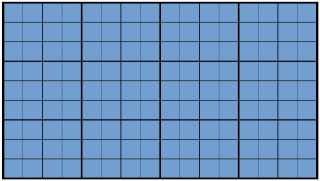
16:9 (1.77:1 = 42:32) is an aspect ratio with a width of 16 units and height of 9. Since 2010 it has become the most common aspect ratio for televisions and computer monitors, and is also the international standard format of HDTV, Full HD, non-HD digital television and analog widescreen television. This has replaced the old 4:3 aspect ratio.
Negative pulldown is the manner in which an image is exposed on a film stock, described in the number of film perforations spanned by an individual frame. It can also describe the orientation of the image on the negative, whether it is captured horizontally or vertically. Changing the number of exposed perforations allows a cinematographer to change both the aspect ratio of the image and the size of the area on the film stock that the image occupies.

Techniscope or 2-perf is a 35 mm motion picture camera film format introduced by Technicolor Italia in 1960. The Techniscope format uses a two film-perforation negative pulldown per frame, instead of the standard four-perforation frame usually exposed in 35 mm film photography. Techniscope's 2.33:1 aspect ratio is easily cropped to the 2.39:1 widescreen ratio, because it uses half the amount of 35 mm film stock and standard spherical lenses. Thus, Techniscope release prints are made by anamorphosizing and enlarging each frame by a factor of two.

Technirama is a screen process that has been used by some film production houses as an alternative to CinemaScope. It was first used in 1957 but fell into disuse in the mid-1960s. The process was invented by Technicolor and is an anamorphic process with a screen ratio the same as revised CinemaScope (2.35:1), but it's actually 2.25:1 on the negative.
Super Panavision 70 was the marketing brand name used to identify movies photographed with Panavision 70 mm spherical optics between 1959 and 1983.
Ultra Panavision 70 and MGM Camera 65 were, from 1957 to 1966, the marketing brands that identified motion pictures photographed with Panavision's anamorphic movie camera lenses. The 70 mm film gauge actually used 65 mm wide film in the camera to capture images in these processes. The projection print, however, was 70 mm film stock. The extra 5 mm on the positive projection print was used to accommodate six-track stereo sound. Ultra Panavision 70 and MGM Camera 65 were shot at 24 frames per second (fps) using anamorphic camera lenses. Ultra Panavision 70 and MGM Camera 65's anamorphic lenses compressed the image 1.25 times, yielding an extremely wide aspect ratio of 2.76:1.
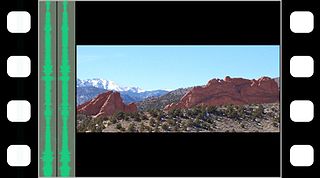
Anamorphic format is the cinematography technique of shooting a widescreen picture on standard 35mm film or other visual recording media with a non-widescreen native aspect ratio. It also refers to the projection format in which a distorted image is "stretched" by an anamorphic projection lens to recreate the original aspect ratio on the viewing screen. The word anamorphic and its derivatives stem from the Greek words meaning "formed again". As a camera format, anamorphic format is losing popularity in comparison to "flat" formats such as Super 35 mm film shot using spherical lenses; however, because most film movie projectors use anamorphic projection format, spherical format negatives are commonly converted into anamorphic prints for projection.

The Arri Alexa is a digital motion picture camera system made by Arri first introduced in April 2010. The camera was Arri's first major transition into digital cinematography after smaller previous efforts such as the Arriflex D-20 and D-21.
The Arriflex D-21 is a film-style digital motion picture camera introduced by Arri in 2008 to replace their earlier generation Arriflex D-20.
This page is based on this
Wikipedia article Text is available under the
CC BY-SA 4.0 license; additional terms may apply.
Images, videos and audio are available under their respective licenses.

